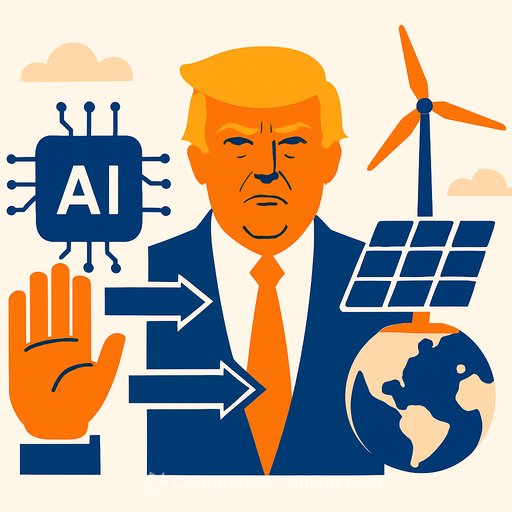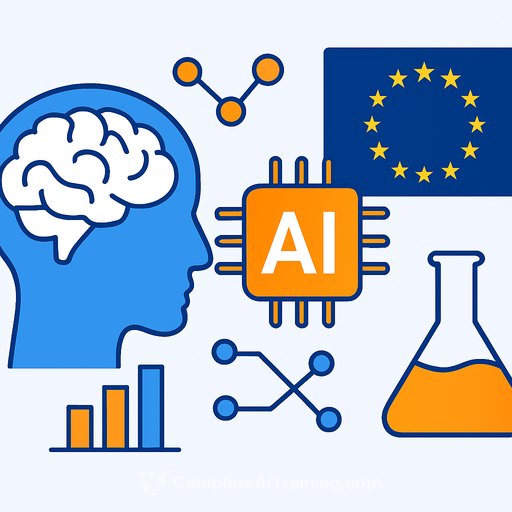Trump’s AI Strategy Is At War With Itself
AI policy is complex. It spans sectors, jurisdictions, and requires consistent coordination across government branches. In contrast to previous efforts that emphasized dialogue and alignment, the Trump administration’s AI Action Plan reveals deep contradictions upon closer inspection. Its ideas may seem promising at first glance, but the details expose a plan struggling against itself and the administration’s other policies.
The only coherent parts of the plan either show a disregard for how AI functions or hint at a troubling attempt to control and suppress research—actions that should alarm the tech community.
Innovation: Contradictory Priorities
The plan’s first pillar emphasizes innovation, promoting frameworks to assess AI reliability, quality data sets for scientific use, and open source models for better evaluation. These goals are vital and widely supported. Yet, the administration’s actions tell a different story.
Vice President JD Vance’s stance at the Paris AI Action Summit dismisses AI safety concerns. Meanwhile, the National Institute of Standards and Technology (NIST) is directed to remove considerations of AI bias, misinformation, and climate impact from its Risk Management Framework. Additionally, crucial government data sets used in medicine and public health research have been systematically dismantled, undermining the very data foundations the plan claims to support.
Building Infrastructure: Looking Back Instead of Forward
The second pillar focuses on infrastructure: electric grids, semiconductor manufacturing, data centers, and workforce development. These are essential for AI progress but the approach misses emerging needs.
Electricity demand is rising due to AI and broader electrification trends. The U.S. should accelerate clean energy deployment—solar, wind, energy storage—to meet this demand efficiently. However, the administration’s policies increase taxes on clean energy and add bureaucratic hurdles, slowing project approvals. For example, the Secretary of the Interior must personally approve solar and wind permits on federal lands, delaying progress.
Instead of promoting clean energy, the plan suggests fast-tracking fossil fuel connections and using backup diesel generators that increase pollution without effectively lowering energy costs. While it mentions advanced energy technologies like geothermal and fusion, federal funding cuts at agencies like the Department of Energy and Environmental Protection Agency threaten their development.
Research and Trust: A Weakening Foundation
Cutting-edge AI innovation depends on sustained academic research and federal investment. This includes foundational AI science, sociotechnical studies, and equitable AI education. Yet, funding for these areas faces severe cuts, undermining the U.S.'s ability to compete globally.
Trust is crucial on the world stage. Despite growing international AI demand, suspicion toward American tech companies is increasing. The administration’s confrontations with the European Union and Brazil over content moderation fuel anti-American sentiment. Meanwhile, China has released an open, collaborative AI plan, positioning itself as a partner to developing countries.
Given the U.S. government's contradictory stance—relaxing export controls while demanding foreign partners limit Chinese influence—it is unclear why other countries would align with the U.S.
Regulatory Climate and Ideological Bias: A Threat to Innovation
The AI Action Plan’s approach to regulation raises red flags. It proposes withholding federal funds from states based on vague criteria like their “AI regulatory climate.” It also requires companies seeking federal contracts to certify their AI models as “free from ideological bias” and “objective.”
These terms lack clear definitions, effectively becoming tools to reward compliance and punish dissent. Past efforts to set guidelines around algorithmic discrimination involved careful legal consultation. This plan appears designed to enforce conformity, risking an AI landscape where models simply echo those in power.
Conclusion
The administration’s AI strategy undermines research, clean energy development, and international trust—elements critical for success. Addressing these issues demands humility, listening to public concerns, and leading by example. Even then, rebuilding credibility and leadership could take years.
For professionals in science and research, understanding these policy dynamics is essential. They shape the environment in which AI innovation occurs, affecting funding, collaboration, and the future of technology development.
To stay informed and enhance your skills amid these challenges, consider exploring up-to-date AI courses designed for professionals navigating the evolving AI landscape.
Your membership also unlocks:






